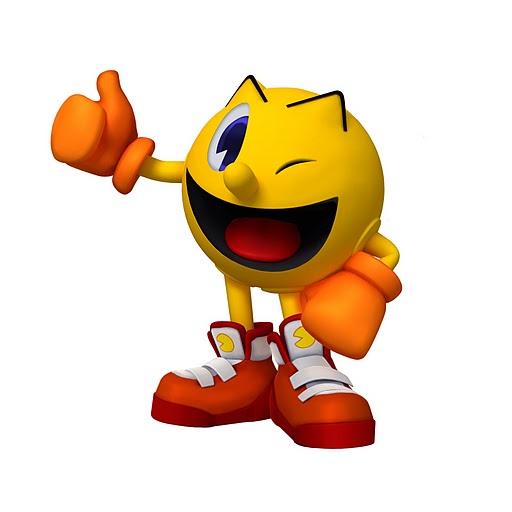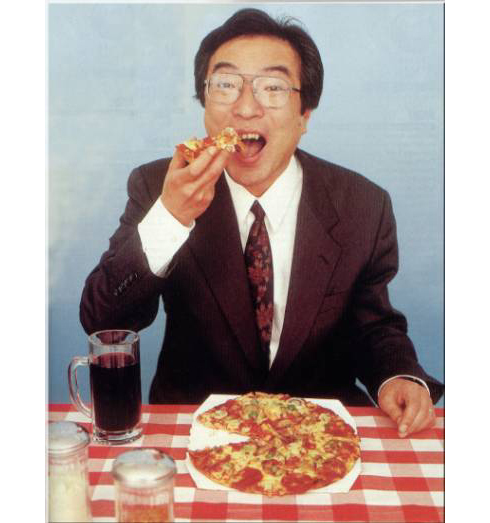Overview
 Pac-Man's design in Pac-Man Party
Pac-Man's design in Pac-Man PartyPac-Man is the eponymous player character originally introduced in Namco's hit arcade game Pac-Man. He was designed by Tōru Iwatani, the creator of the Pac-Man franchise. Pac-Man's name is derived from the phrase "paku-paku," which is Japanese onomatopoeia for the sound made by opening and closing one's mouth repeatedly, typically while eating.
Since his debut in 1980, Pac-Man's incredible popularity has led him to become a worldwide social phenomenon and Namco's official mascot character. He has appeared in dozens of games, including numerous spin-off titles and many unauthorized "bootleg" games (typically clones of the original arcade game). His likeness appears across a wide variety of Pac-Man-related merchandise, and he has starred in two of his own animated television series.
According to a market survey, Pac-Man has the highest brand awareness of any video game character among American consumers; he was recognized by 94% of those surveyed, surpassing both Mario and Sonic in terms of familiarity.
Design
The origins of Pac-Man's character design are a matter of some debate. His creator Tōru Iwatani has repeatedly claimed in interviews that he was struck by inspiration while eating a pizza; after removing a single slice, the circular pie resembled a head with an open mouth. However, he has also stated that Pac-Man's design was derived from a rounded version of the square-shaped Japanese character "kuchi," which means "mouth".
 Iwatani in a promotional photo
Iwatani in a promotional photoIn spite of internal feedback during the original game's development, Iwatani pushed to keep Pac-Man's design as simple as possible, preferring to leave any finer details to players' imaginations. He also desired to make a "cute" arcade game with appealing characters that could potentially attract a wider audience of players, particularly women. Pac-Man's distinctive yellow color was chosen because Iwatani felt that yellow was a "peaceful" or "neutral" color which represents neither friend nor foe. Although Pac-Man appears within the game itself as a simple yellow circle with a mouth, the Japanese cabinet art for the original arcade game portrays him as an anthropomorphized yellow sphere with eyes, arms, legs and a long nose; this depiction of Pac-Man has informed nearly every design iteration of the character since his debut.
The character's name was written in English as "Puck-Man" on the cabinet art for the initial Japanese release of the 1980 arcade game. However, his name was changed to "Pac-Man" during the game's North American localization because Namco feared vandals might easily change the "P" in "Puck" to an "F" in order to create profanity.
Games
Pac-Man started out as a single game. The game Pac-Man quickly became a smash hit on both Eastern and Western shores. Due to this fact Namco quickly extended the loveable circle into more and more games. The series quickly expanded into Ms. Pac-Man, Super Pac-Man, Pac-Man Plus, Jr. Pac-Man, Pac and Pal, and more. The series has been one of the only to be published for over 20 years. Pac-Man was also moved into 3D games when Namco decided to make Pac Man World, a 3D adventure game loosely based around collecting dots.
Log in to comment